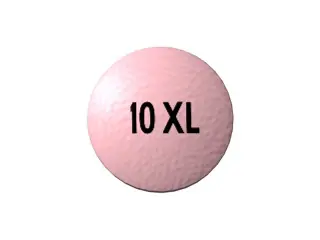| Package | Dosage | Price | Price per Dose | |
|---|---|---|---|---|
| Dosage: 2,5mg | ||||
| 240 pill | 2,5mg | AUD405.85 | AUD1.69 | |
| 120 pill | 2,5mg | AUD205.33 | AUD1.72 | |
| 90 pill | 2,5mg | AUD164.26 | AUD1.81 | |
| 60 pill | 2,5mg | AUD113.53 | AUD1.88 | |
| 30 pill | 2,5mg | AUD60.37 | AUD2.03 | |
| Dosage: 5mg | ||||
| 360 pill | 5mg | AUD1,077.49 | AUD3.00 | |
| 240 pill | 5mg | AUD729.59 | AUD3.04 | |
| 180 pill | 5mg | AUD560.48 | AUD3.12 | |
| 120 pill | 5mg | AUD381.70 | AUD3.19 | |
| 90 pill | 5mg | AUD299.55 | AUD3.33 | |
| 60 pill | 5mg | AUD210.16 | AUD3.50 | |
| 30 pill | 5mg | AUD113.53 | AUD3.74 | |
| 20 pill | 5mg | AUD79.70 | AUD4.01 | |
| 10 pill | 5mg | AUD43.46 | AUD4.30 | |

Oxybutynin Description
Overview of Oxybutynin
Oxybutynin is a medication commonly used to treat overactive bladder and urinary incontinence. It belongs to the class of anticholinergic agents, which work by relaxing the bladder muscles, thereby reducing the urgency and frequency of urination. This medication can be very effective for individuals who suffer from these conditions, providing significant relief and improving quality of life.
How Oxybutynin Works
The active ingredient, oxybutynin, works by blocking certain nerve signals that cause bladder muscles to contract involuntarily. By doing so, it increases the bladder's capacity and decreases the frequency of urges and leaks. The medication is often prescribed in various forms, including tablets, transdermal patches, and gels, allowing flexibility based on patient needs and preferences.
Effectiveness and Benefits
Many users report substantial improvements in their symptoms after beginning oxybutynin therapy. It typically takes a few days to notice the benefits, with maximum effects usually seen within a few weeks. Patients often experience a reduction in urinary urgency, leakage, and frequency, leading to greater confidence and comfort during daily activities. For some, oxybutynin proves to be a life-changing medication, especially when other treatments have failed.
Potential Side Effects
Like all medications, oxybutynin may cause side effects in some individuals. Common adverse reactions include dry mouth, dizziness, constipation, and blurred vision. These are usually mild and tend to diminish with continued use. However, some users may experience more significant effects such as difficulty urinating or allergic reactions. It is essential to discuss any unusual or persistent symptoms with a healthcare provider.
Precautions and Considerations
Oxybutynin should be used with caution in elderly patients and those with certain health conditions such as glaucoma, urinary retention, or gastrointestinal issues. It is important to inform your doctor about your full medical history before starting the medication. Pregnant and breastfeeding women should consult their healthcare provider to assess the risks and benefits before use. Regular monitoring and follow-up can help ensure safe and effective treatment.
Usage and Dosage
The prescribed dosage of oxybutynin varies based on individual factors and the form used. Typically, the initial dose is low and gradually increased if needed. Patients should adhere strictly to their doctor's instructions, taking the medication at the recommended times and not exceeding the prescribed amount. Proper usage maximizes benefits while minimizing potential side effects.
Conclusion
Oxybutynin remains a widely trusted option for managing overactive bladder symptoms. Its effectiveness in reducing urinary urgency and leakage makes it a valuable tool in improving daily comfort and confidence. However, like all medications, it requires careful consideration of potential side effects and precautions. Consulting a healthcare professional can ensure the best personalized treatment plan and safe use of oxybutynin.

